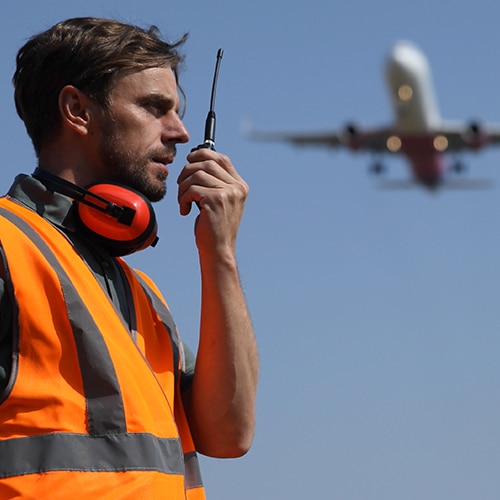3 Sensor Applications in the Airport


The modern airport is cost-effective, efficient, and future-learning. Facilities managers today have access to new technologies that allow for agility on a daily basis.
Many airports have adapted sensor technologies to help focus on preventing problems before they occur. With sensors, facilities teams can collect information and devise solutions to prevent failure or fix problems at more convenient times.
Here are three common sensor applications in the airport, all of which help prevent failure, decrease downtime, and lead to efficiency in the workplace.

Baggage handling systems are made up of countless conveyor belts and parts working behind the scenes. When a part of the system goes down, it becomes a nightmare situation for employees.
By installing sensor technology, facilities managers can tell when a motor on the belt is overheating or vibrating heavily. This is an indication of a larger problem, that something will break soon. With sensors feeding this information to a central location via Wi-Fi, the facilities manager sees this problem and its location, and immediately deploys a solution, preventing downtime.
Escalators and walkways are crucial to airport operations in that they simply move people from one place to another quickly and efficiently. But when one of these important people movers breaks down and lots of passengers are walking through, you can end up with an impatient, angry, and bottlenecked crowd!
To keep things running smoothly, it’s necessary to keep an eye on operations at all times. Similar to the baggage system, sensors can detect motors that overheat or start to shake. They can also detect torn belts or misalignment on belts.
It’s always best when staff catches and checks these issues early. Then facilities managers can reroute traffic and immediately mobilie staff to fix the problem. They can also close off the area and fix it at night instead of peak traffic.
When the cabinet, water supply, or hose freezes, it prevents or delays takeoff as staff cannot get drinkable water into the plane. Often, facilities personnel must check the system manually and regularly to ensure nothing has frozen. This hinders employees’ daily schedules. The task is also often forgotten or not properly checked due to human error. Talk about leaks related to frozen hose / pipes and icing the tarmac which makes the gate unusable due to ice.
With sensors, facilities personnel can monitor the flow of water, leaks, broken pipes, loose nozzles, temperature, and whether the doors on the cabinet are open or closed. All of these sensors work together to detect potential problems with the water cabinet and gather information to work smarter in the future.
At Embedded Planet, if we can sense it, we can put it into the cloud. Our Gateway collects all the information our sensors gather. The Gateway is a database in the airport command center that analyzes the information in order to make sense of it and put out any necessary alerts to facilities personnel.
Data gathering is a hugely important tool in airport operations. Connecting the airport to the cloud allows you to make smarter decisions on a broader level. It saves time, effort, and money in the long run. At Embedded Planet, we’re proud to keep airports across the nation up and running using modern technology.
Interested in learning more? Visit our airport industry guide for more information on real-time solutions for everyday airport operations.